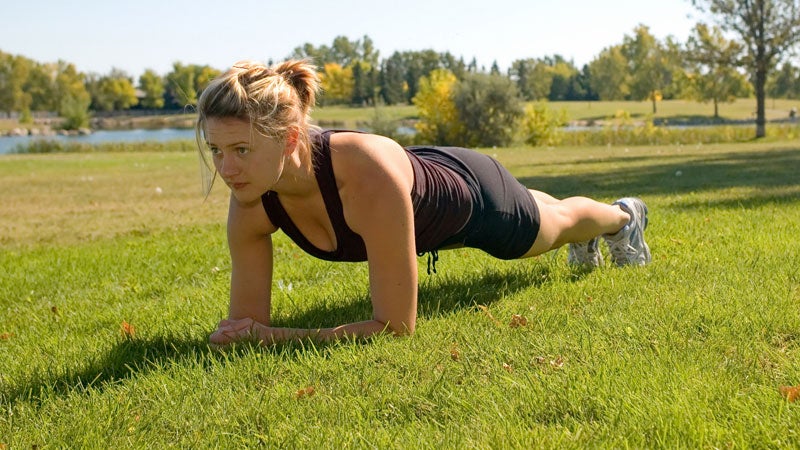It depends what you’re looking to achieve with your planks, says personal trainer and strength coach Jay Wright, owner of fitness facilities in New York City and San Francisco’s brand-new NEMA community—and, ultimately, which type you’re able to do most comfortably and correctly.
Planking with your arms straight and palms on the ground (sometimes known as a standard plank) engages a lot of arm muscles, specifically the triceps, in addition to working the core, Wright says. “That’s great if you’re looking for a more full-body exercise and you want to strengthen your upper body as well, but it’s also going to take away from focus on the transverse abdominis.”
If the main purpose of your planks is to strengthen that transverse abdominis muscle (or, you know, flatten those abs), a forearm or dolphin plank—in which your arms are bent, elbows are directly beneath shoulders, and your weight rests on your forearms with palms pressing into the ground—may be a better bet.
Another advantage to the forearm plank? “It’s generally a little easier for people to manipulate their shoulder blades down and back into the right place and to maintain proper form,” says Wright. It also takes pressure off the wrists from being bent at a 90-degree angle, something that may bother people with tendonitis or inflammation stemming from old injuries.
Regardless of how you plank, keep it up: You really can’t go wrong as long as you’re paying attention to proper form, which involves keeping a straight line between your shoulders and ankles, not sticking your butt in the air, and not collapsing your lower back. If you’re up for more of a challenge, add in some side planks, incorporate lateral movements (like walking your feet in and out or side to side, or “threading the needle” by twisting one arm at a time underneath and across your body), or put your hands or feet on an unstable surface like a foam pad or a Bosu ball.
Bottom line: A forearm plank will help you target those abs more effectively, but a standard straight-arm plank is better for total-body conditioning. For best overall results, switch it up frequently and add in some dynamic plank movements, as well.


